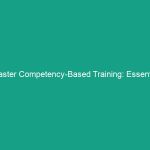Introduction
In today’s fast-paced industrial Environment, the significance of Health, Safety, and Environment (HSE) practices cannot be overstated. A workplace that prioritizes these elements not only ensures the Safety of its employees but also protects the surrounding environment from potential Hazards. One critical aspect of HSE is the implementation of effective spill Prevention control and countermeasures. These measures are designed to mitigate the risks associated with spills, particularly those involving hazardous materials, which could lead to serious health risks and environmental damage.
Understanding and applying spill prevention control and countermeasures is essential for any organization handling potentially harmful substances. In this article, we will delve deeper into the regulatory frameworks, best practices, real-world case studies, challenges faced, and future trends in spill prevention and response. Our goal is to equip you with the knowledge needed to safeguard your workplace and the environment effectively.
Regulatory Frameworks
To effectively implement spill prevention control and countermeasures, it is crucial to understand the regulatory frameworks governing these practices. Various agencies, including the Environmental Protection Agency (EPA) in the United States, set forth Regulations that dictate how organizations should manage hazardous substances. These regulations often require companies to have a Spill Prevention, Control, and Countermeasure (SPCC) plan in place.
Key Regulations
The SPCC rule, established under the Clean Water Act, mandates that facilities that store oil and other hazardous materials must develop a comprehensive plan to prevent oil spills. This includes:
- Identifying potential spill sources.
- Implementing best management practices (BMPs).
- Training employees on spill response Procedures.
- Conducting regular inspections and Maintenance of containment systems.
Compliance and Enforcement
Compliance with these regulations is not only a legal obligation but also a corporate responsibility. Failure to adhere to these guidelines can result in severe penalties, including fines and shutdowns. Therefore, understanding the regulatory landscape is essential for any organization looking to establish effective spill prevention control and countermeasures.
Best Practices for Spill Prevention
Implementing Best Practices is vital for organizations aiming to improve their spill prevention control and countermeasures. These practices not only protect the environment but also enhance Workplace Safety and promote a culture of responsibility among employees.
Risk Assessment and Planning
A thorough risk assessment is the cornerstone of any effective spill prevention strategy. Organizations should conduct regular assessments to identify potential spill sources, evaluate the likelihood of spills occurring, and determine the potential impact on both health and the environment. This information can be used to develop a tailored spill prevention plan that addresses specific vulnerabilities.
Employee Training and Awareness
Training is a critical component of spill prevention control and countermeasures. Employees must be well-informed about the types of hazardous materials they work with, the potential risks associated with those materials, and the proper procedures for handling and storing them. Regular training sessions can enhance employee awareness and preparedness, ultimately reducing the likelihood of spills.
Use of Containment Systems
Effective containment systems are a vital part of any spill prevention strategy. These systems can include:
- Secondary containment structures, such as berms and dikes.
- Containment trays for drums and storage tanks.
- Properly designed storage areas that minimize spill risks.
By utilizing these systems, organizations can significantly reduce the risk of spills and ensure that any potential leaks are quickly contained.
Case Studies: Learning from Real-World Incidents
Examining real-world incidents provides invaluable insights into the effectiveness of spill prevention control and countermeasures. These case studies highlight the importance of preparedness and the consequences of negligence.
The Deepwater Horizon Spill
The Deepwater Horizon oil spill in 2010 serves as a stark reminder of the catastrophic consequences that can arise from inadequate spill prevention measures. The explosion resulted in the release of millions of barrels of oil into the Gulf of Mexico, leading to devastating environmental and economic impacts. In the aftermath, regulatory bodies tightened regulations on oil drilling and mandated the implementation of stricter spill prevention controls.
Exxon Valdez Oil Spill
Another notable case is the Exxon Valdez oil spill of 1989, which released approximately 11 million gallons of crude oil into Prince William Sound in Alaska. This incident sparked significant changes in U.S. oil spill prevention regulations, including the requirement for double-hulled tankers. Organizations can learn from these incidents by adopting robust spill prevention strategies and staying informed about regulatory changes that arise in response to such events.
Challenges in Spill Prevention Control
Despite the best intentions, organizations often face challenges in implementing spill prevention control and countermeasures effectively. Recognizing these challenges is the first step toward overcoming them.
Resource Limitations
Many organizations, particularly smaller ones, may struggle with limited resources for implementing comprehensive spill prevention programs. Budget constraints can hinder the procurement of necessary equipment, training, and maintenance efforts. However, by prioritizing spill prevention within their budgets and seeking grants or partnerships, organizations can enhance their spill prevention efforts.
Employee Turnover
High employee turnover can pose a significant challenge in maintaining consistent spill prevention practices. When experienced employees leave, organizations may find it difficult to retain the knowledge and skills necessary for effective spill management. To combat this, companies should develop a robust onboarding process that emphasizes spill prevention training and create a culture where Safety is a shared responsibility among all employees.
The Future of Spill Prevention Control and Countermeasures
Looking ahead, the future of spill prevention control and countermeasures will likely be shaped by advancements in technology and evolving regulatory requirements. Organizations must stay proactive in adapting to these changes.
Technological Innovations
Emerging technologies, such as drones and remote monitoring systems, are revolutionizing the way organizations approach spill prevention. These tools can provide real-time data on potential risks, allowing for quicker responses to potential leaks before they escalate. Furthermore, advancements in materials science may lead to the development of more effective containment systems that can withstand various environmental conditions.
Regulatory Evolution
As environmental concerns continue to grow, regulatory frameworks will likely become more stringent. Organizations must stay informed about changes in legislation and be prepared to adapt their spill prevention control and countermeasures accordingly. This proactive approach will not only ensure compliance but also demonstrate a commitment to environmental stewardship.
Conclusion
In conclusion, understanding and implementing effective spill prevention control and countermeasures is essential for any organization that handles hazardous materials. By adhering to regulatory frameworks, adopting Best Practices, learning from real-world case studies, and addressing challenges head-on, organizations can significantly reduce the risk of spills and their associated consequences.
As we move towards a future where environmental protection is paramount, it is crucial that organizations remain vigilant and proactive in their spill prevention efforts. Remember, safety is a shared responsibility – every employee plays a role in ensuring a safe and environmentally friendly workplace. Take action today to enhance your spill prevention strategies and contribute to a safer tomorrow.


